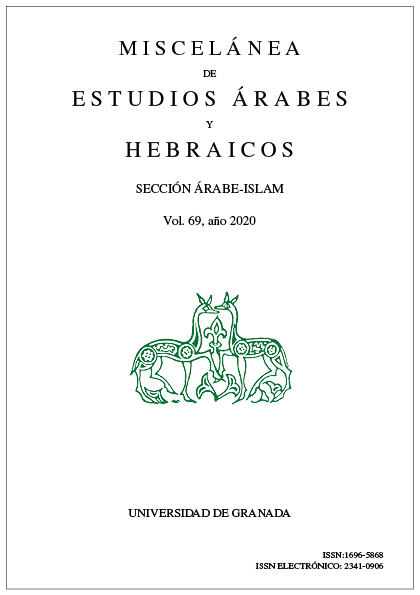The subversion of the Orientalist discourse in Dijo el camaleón of María Victoria García
DOI:
https://doi.org/10.30827/meaharabe.v69i0.1068Keywords:
Orientalism, Subversion, Hybridity, Morroco, RepresentationAbstract
This paper examines how Moroccan reality is represented in the work Dijo el camaleón, by Mexican author María Victoria García. Using an eclectic methodology, the paper presents and analyzes some of the narrative strategies the writer uses in her subversion of the usual postulates of highly eurocentric, classical Orientalist discourse, attempting to present a new model of contextualized Spanish American narrative in the East. It also seeks to demonstrate how key elements in the work, such as linguistic variations, semantic alterations and the destabilization of historiographic myths about Moroccan reality, enable the Mexican author, first, to produce a discourse characterized by hybridity and, second, to bring about a deorientalization of the writing. The result is a narrative model that celebrates the encounter between Eastern-Moroccan alterity and Mexican sameness and furthers a more horizontal Orientalist representation that seeks to overcome the preju- diced vertical and ethnocentric paradigm frequently found in Orientalist writings.
Downloads
Downloads
Published
How to Cite
Issue
Section
License
The authors publishing their work in this journal agree to the following terms and conditions:
1. The authors retain the copyright and give the journal the right to be the first publication of the work and also to be licensee under a Creative Commons Attribution License which allows others to share the work, provided the author of the work and the initial publication in this journal are acknowledged.
2. Authors may make additional agreements separately for the non-exclusive distribution of the version of the work published in the journal (for example, putting it in an institutional repository or publishing it in a book), with acknowledgement of its initial publication in this journal.
3. Authors are allowed and encouraged to electronically disseminate (for example, in institutional repositories or on their own web page) the published version of their works (publisher's post-print version) or, if not possible, the author's reviewed and accepted post-print version. This is to facilitate productive exchanges, and allow for earlier and greater citation by third parties of the published works (See The Effect of Open Access).
4. The journal accepts no responsibility for the opinions expressed by the authors.



















